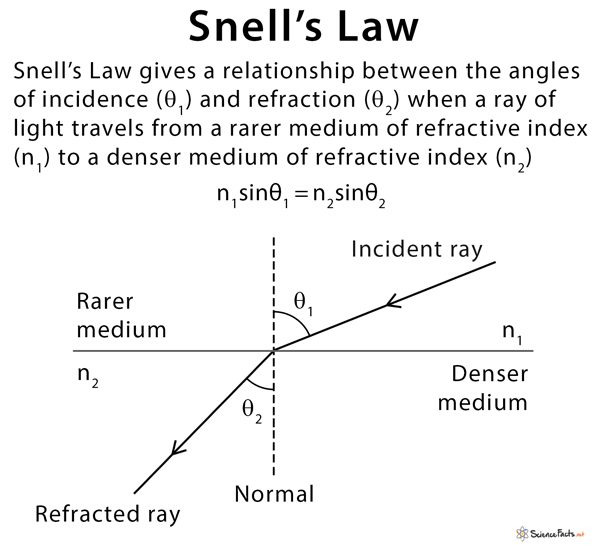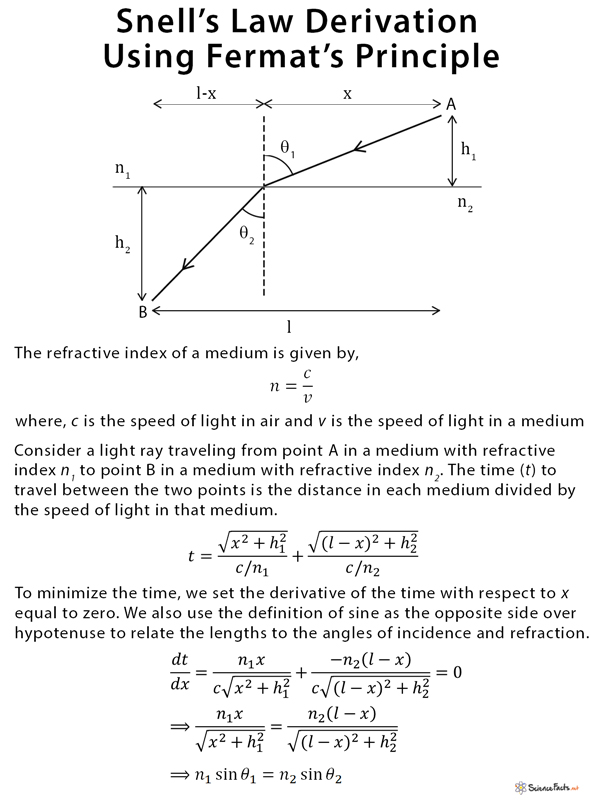Snell’s Law
What is Snell’s Law?
When a ray of light travels from a rarer medium to a denser medium, it bends towards the normal at the interface between the two media. Similarly, when the ray travels from a denser medium to the rarer medium, it bends away from the normal. This phenomenon is called refraction. Snell’s law gives a relationship between the angles of incidence and refraction. In order to understand this relationship, it is critical to know the refractive indices of the two mediums.
The history of Snell’s Law goes back to 1621 when Dutch astronomer and mathematician Willebrord Snell discovered the laws of refraction.
Snell’s Law Formula
Terms Associated With Refraction
- Incident Ray: The ray of light that is incident on the interface.
- Refracted Ray: The ray of light that is refracted at the interface.
- Normal: The perpendicular to the interface.
- Angle of Incidence: The angle that the incident ray makes with the normal.
- Angle of Refraction: The angle that the refracted ray makes with the normal.
- Refractive Index: The ratio of the velocity of light in air to its velocity in the medium.
Derivation of Snell’s Law From Fermat’s Principle
Applications of Snell’s Law
Snell’s Law has many real-life applications in many optical apparatuses such as eyeglasses, contact lenses, and cameras. There is an instrument called a refractometer that uses Snell’s Law to calculate the refractive index of liquids.
Snell’s Law is the basis of optical technology. Optical components and systems are designed using Snell’s Law and the laws of reflection. An essential application of Snell’s Law is fiber optics. Fiber optic cables are used in telecommunications, especially data transmission in high-speed servers.
Article was last reviewed on Wednesday, April 15, 2020









